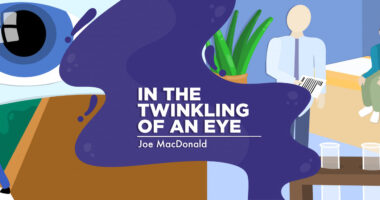Over 50% of hemophilia patients not ‘fine’ but hide symptoms: Report
Global survey aimed to uncover challenges of life with blood disorder

A global survey of more than 2,700 hemophilia patients, caregivers, and healthcare providers, which aimed to uncover the daily challenges of living with the rare blood disorder or caring for those who do, found that many patients regularly hide their symptoms — including from their doctors.
“More than half of patients (54%) with hemophilia report having fair or poor health, though many tell their healthcare provider they are fine (71%),” the survey reported, further noting that more than 50% “try to hide their symptoms from others about once a week or more often.”
Many of these individuals were concerned about being treated differently, according to the survey’s findings. In fact, among the patients’ “top goals” were going about day-to-day life “without discomfort or worry of a bleed and reducing impact on personal relationships.”
More than 80% of patients also reported that they wanted to play a more active role in treatment decisions.
Touted as the first of its kind, the Sanofi-sponsored study, titled “Hemophilia Life Stages and Changes Global Survey,” was conducted in collaboration with The Harris Poll, a Stagwell consulting and market research firm. Sanofi markets several approved therapies for different types of hemophila.
Over 2,500 patients, caregivers, hematologists surveyed
Globally, more than 1 million people are estimated to have hemophilia, a rare bleeding disorder caused by deficiencies in certain blood clotting factors.
This survey sought to deliver critical insights from patients, caregivers, and hematologists — specialists on blood-related conditions — on the everyday challenges posed by hemophilia. It also sought to evaluate the disease’s impact on important life stages, including patients’ ability to travel, work, and maintain relationships.
The overarching goal, according to Sanofi, is for the hemophilia community to use the findings to drive dialogue and actions that ultimately result in better treatments and care.
“As a company deeply committed to the global hemophilia community, Sanofi wanted to hear directly from the people affected by this disorder about how hemophilia impacts critical stages or aspects of their lives,” Alaa Hamed, MD, Sanofi’s global head of medical affairs, rare diseases and rare blood disorders, said in a company press release.
“It is through this type of listening that we can better understand unmet needs,” Hamed said.
Sanofi has several therapies for hemophilia in its pipeline. Among the company’s approved treatments for the disorder are Eloctate (efmoroctocog alfa) and Altuviiio (efanesoctocog alfa) for hemophilia A, and Alprolix (eftrenonacog alfa) for hem B.
The results of this study will help guide Sanofi’s work in product development, the company said in its statement.
“Listening deeply to the community helps us provide the right support at the right time so that people with hemophilia can focus less on living with this condition, and more on living the lives they choose,” said Tom Snow, global franchise head of neurology and rare blood disorders at Sanofi.
The online survey, conducted between Feb. 27 and April 10, was completed by 2,709 participants across 11 countries — Australia, Canada, China, France, Germany, India, Italy, Japan, Spain, the U.K., and the U.S.
It included 950 adults with hemophilia, 1,080 adults who provided care or support to a friend or relative with hemophilia, and 679 hematologists who treat at least two hemophilia patients monthly.
Over 40% of patients stop activities due to hemophilia
The survey found that more than 51% of patients at least once weekly refrain from revealing their symptoms to others, and more than two-thirds (68%) avoid telling their friends about their hemophilia.
In addition, more than half of the patients surveyed reported feeling anxious (59%) and depressed (51%) about their disease at least once a week. Most hematologists — 83% of the specialists surveyed — agreed that their patients often felt anxiety about their disease.
Negative impacts to their own mental and physical health also were felt by caregivers, with such burdens reported by 64%. Further, 80% of caregivers reported feeling both physically and emotionally drained.
While most patients (84%) and caregivers (87%) felt that clinicians overall understand the emotional impact of hemophilia on their life, 81% of the hematologists agreed that they wished it were easier to discuss these emotional effects with their patients. More than 9 in 10 hematologists (91%) reported that they understood the emotional impact hemophilia has on patients’ lives.
In terms of day-to-day life, many of those with hemophilia reported being constrained by their disorder.
Some 41% of patients in the survey reported that hemophilia caused them to cease participating in certain activities. Nearly 1 in 4 patients (22%) reported having postponed having children, and 18% decided against having children.
Hematologists reported that more than half of their pediatric patients have avoided school sports due to their disease. Overall, 47% missed out on certain activities more than their healthy peers because of hemophilia.
Regarding patient care, only about one third (35%) of the respondents with hemophilia reported feeling adequately included in discussions about treatment plans. According to a Stagwell press release, this is a “troubling disconnect” between patients and hematologists when it comes to participation in treatment decisions.
Most patients — 83% in all — wished to have more input in their care, the data showed. Interestingly, 84% of hematologists also wanted their patients to be more involved, and most caregivers (81%) said they also wanted to have a more active role in treatment decisions.
In addition, most patients (84%), caregivers (88%), and hematologists (91%) reported they wished for additional therapeutic options.
Differences in dealing with disease seen across continents
The global survey also revealed differences across countries regarding the impact of hemophilia. One such difference was in the ages at which patients receive care — and who was caring for them.
In the U.S., most caregivers (91%) cared for an offspring with hemophilia, with 94% of the patients being younger than age 18. Meanwhile, adult children, ages 25 to 34, had parents as caregivers in just 1% of cases in the U.S. By contrast, in Japan, 3% of caregivers cared for their offspring, 67% of whom were younger than 18.
Differences also were seen across certain countries in the ease with which hemophilia’s impact on emotions are discussed, according to Stagwell.
While nearly all hematologists in China (98%) wished it were easier to discuss the disease’s emotional impact with their patients, that sentiment was reported by 78% of specialists in the U.S., the company stated.
Stagwell also reported differences in attitudes about hemophilia among patients in the U.S. and Europe.
According to the company, 80% of those in Germany and 74% of those in the U.K. feel the need to hide their disorder — “for worry of being treated differently” — while only 41% of those in the U.S. shared that feeling.
Such insights were the goal of the study, according to the team at The Harris Poll.
[This] picture of life with hemophilia reveals unique challenges, impacts, and unmet needs that point to how patient care and outcomes could be improved for this population.
“The robust scope and multiple, diverse perspectives included in this research enable us to paint a detailed picture of what it’s like to live with and manage this debilitating life-long condition throughout key aspects, milestones, and life events,” said Kathy Steinberg, vice president of media and communications research at The Harris Poll.
“That picture of life with hemophilia reveals unique challenges, impacts, and unmet needs that point to how patient care and outcomes could be improved for this population,” Steinberg said.
Sanofi, for its part, will use these results to try to better meet those “evolving needs,” the company said.
“Our mission is to advance a model of care that provides the right support at the right time to serve this community,” Hamed said.









